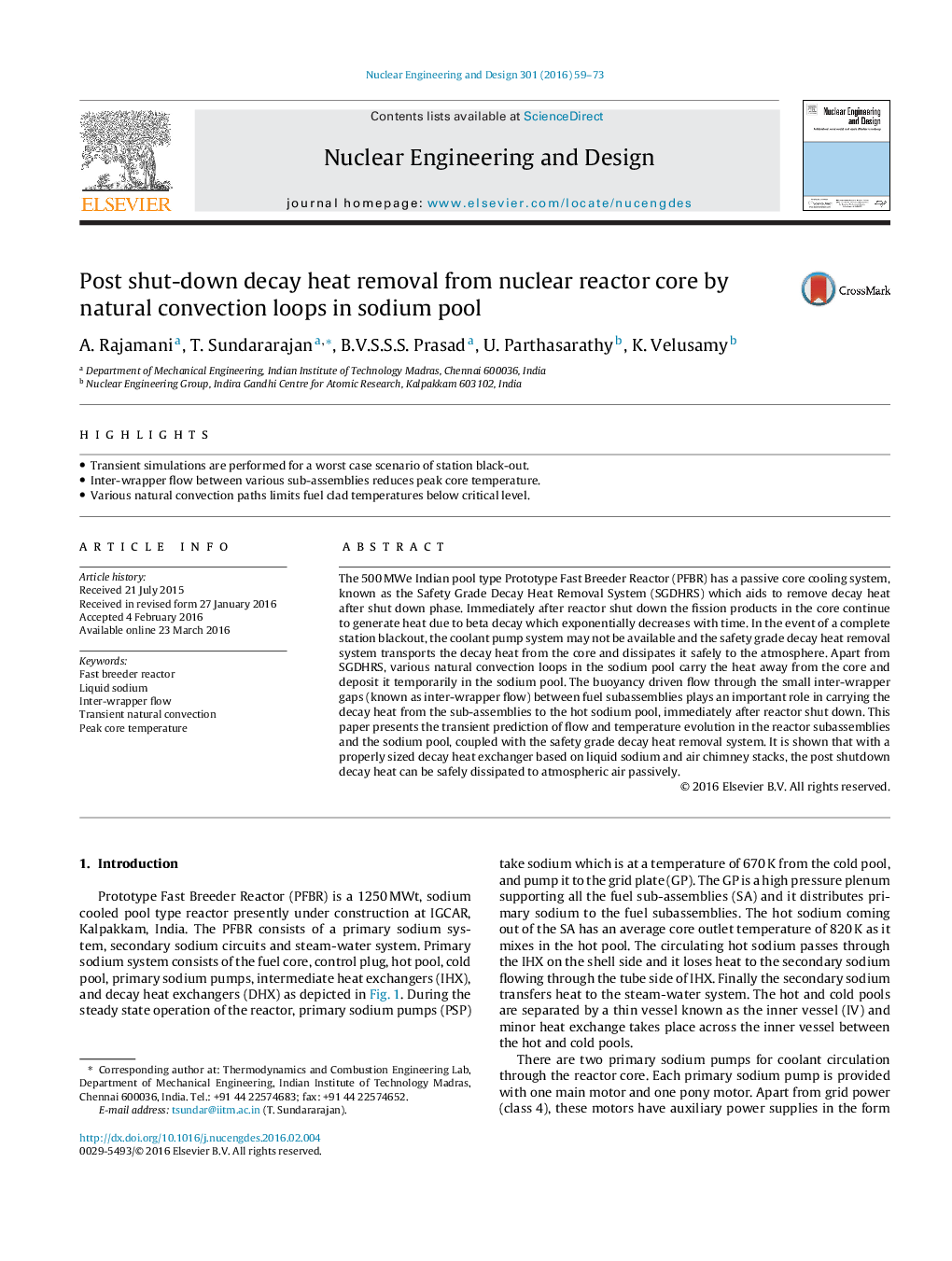| کد مقاله | کد نشریه | سال انتشار | مقاله انگلیسی | نسخه تمام متن |
|---|---|---|---|---|
| 295953 | 511695 | 2016 | 15 صفحه PDF | دانلود رایگان |
• Transient simulations are performed for a worst case scenario of station black-out.
• Inter-wrapper flow between various sub-assemblies reduces peak core temperature.
• Various natural convection paths limits fuel clad temperatures below critical level.
The 500 MWe Indian pool type Prototype Fast Breeder Reactor (PFBR) has a passive core cooling system, known as the Safety Grade Decay Heat Removal System (SGDHRS) which aids to remove decay heat after shut down phase. Immediately after reactor shut down the fission products in the core continue to generate heat due to beta decay which exponentially decreases with time. In the event of a complete station blackout, the coolant pump system may not be available and the safety grade decay heat removal system transports the decay heat from the core and dissipates it safely to the atmosphere. Apart from SGDHRS, various natural convection loops in the sodium pool carry the heat away from the core and deposit it temporarily in the sodium pool. The buoyancy driven flow through the small inter-wrapper gaps (known as inter-wrapper flow) between fuel subassemblies plays an important role in carrying the decay heat from the sub-assemblies to the hot sodium pool, immediately after reactor shut down. This paper presents the transient prediction of flow and temperature evolution in the reactor subassemblies and the sodium pool, coupled with the safety grade decay heat removal system. It is shown that with a properly sized decay heat exchanger based on liquid sodium and air chimney stacks, the post shutdown decay heat can be safely dissipated to atmospheric air passively.
Journal: Nuclear Engineering and Design - Volume 301, May 2016, Pages 59–73
